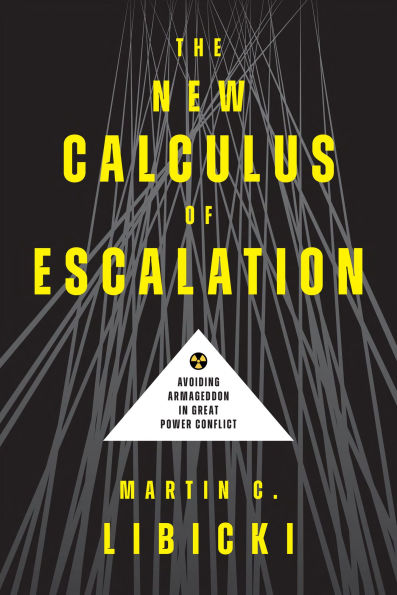A reevaluation of conflict thresholds in the context of complex cyber, conventional, and nuclear war
The return of great power competition has renewed concerns about managing escalation, lest a minor crisis inadvertently spiral into nuclear war. This has become apparent during the war between Russia and Ukraine, as Western aid for Ukraine has been predicated on avoiding Russian escalation.
The New Calculus of Escalation updates our understanding of conflict escalation dynamics for the twenty-first century with the goal of reducing the possibility of a catastrophic war. To improve mutual understanding among states, Libicki rethinks conflict thresholds and exit ramps that manage escalation. During the Cold War, there were two critical thresholds—one between peace and war, and one between conventional war and nuclear war. But ongoing developments in cyber and other advanced military technologies threaten command and control and blur the old thresholds.
Military strategists, international relations scholars, and graduate students will benefit from this book's cogent analytic framework in shaping future debates.
A reevaluation of conflict thresholds in the context of complex cyber, conventional, and nuclear war
The return of great power competition has renewed concerns about managing escalation, lest a minor crisis inadvertently spiral into nuclear war. This has become apparent during the war between Russia and Ukraine, as Western aid for Ukraine has been predicated on avoiding Russian escalation.
The New Calculus of Escalation updates our understanding of conflict escalation dynamics for the twenty-first century with the goal of reducing the possibility of a catastrophic war. To improve mutual understanding among states, Libicki rethinks conflict thresholds and exit ramps that manage escalation. During the Cold War, there were two critical thresholds—one between peace and war, and one between conventional war and nuclear war. But ongoing developments in cyber and other advanced military technologies threaten command and control and blur the old thresholds.
Military strategists, international relations scholars, and graduate students will benefit from this book's cogent analytic framework in shaping future debates.

The New Calculus of Escalation: Avoiding Armageddon in Great Power Conflict
248
The New Calculus of Escalation: Avoiding Armageddon in Great Power Conflict
248Related collections and offers

Product Details
| ISBN-13: | 9781647125776 |
|---|---|
| Publisher: | Georgetown University Press |
| Publication date: | 05/02/2025 |
| Sold by: | Barnes & Noble |
| Format: | eBook |
| Pages: | 248 |
| File size: | 2 MB |
| Age Range: | 18 Years |
